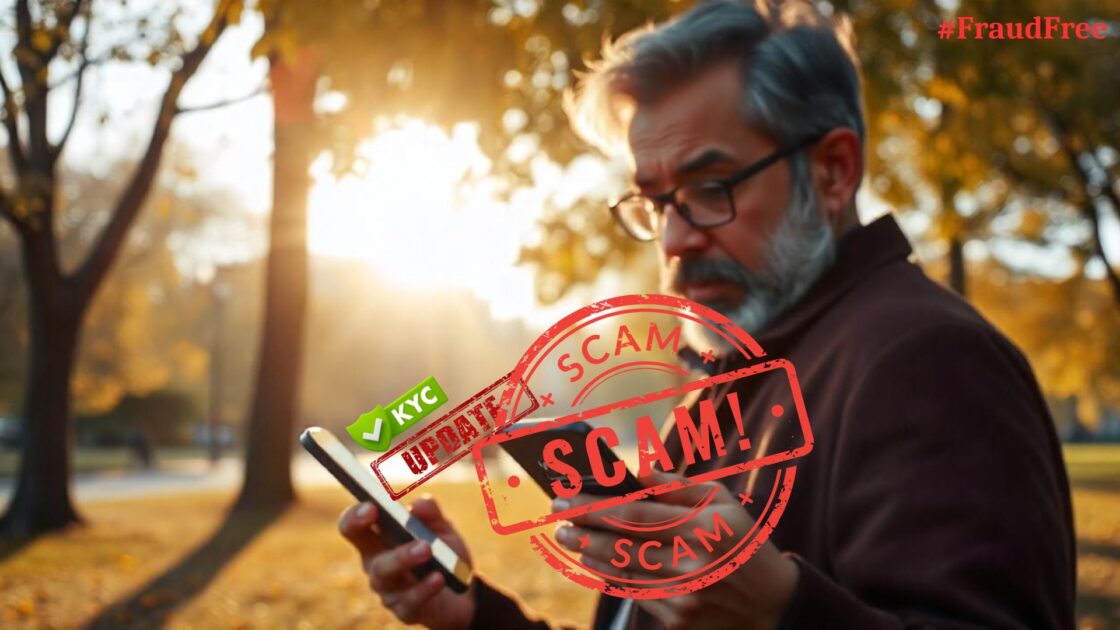NFT scams have become the new talk of the town. What was once sold as the future of art and easy money has slowly turned into one of the most common digital traps out there.
When NFTs first took off, everyone wanted in: artists, investors, even college students. It felt like a modern gold rush. But for every person who made money, there were many who got scammed by fake buyers, shady marketplaces, and too-good-to-be-true promises.
The worst part? Most victims had no idea they were walking into a scam until it was too late.
What are NFTs?
Before we dive deeper into how NFT scams work, let’s quickly understand what NFTs actually are.
NFTs, or Non-Fungible Tokens, are basically digital certificates that prove ownership of something unique: a piece of art, a music clip, or even a tweet.
Each NFT is stored on the blockchain, which makes it traceable and, ideally, tamper-proof.
So why do people buy them?
Because it feels exclusive. You’re not just downloading an image; you’re owning it. Add in stories of people selling digital art for crores, and suddenly, everyone wants to be part of the NFT wave.
The problem starts when this excitement meets inexperience; that’s when scammers step in.
How NFT Scams Work?
Most NFT scams follow a pattern; they start with excitement and end with empty wallets.
Scammers know how to make things look real: fancy websites, verified-looking profiles, and professional DMs that make you feel special.
Here’s how they usually pull it off:
1. Fake Marketplaces
Scammers build websites that look identical to real NFT platforms like OpenSea or Foundation. The moment you connect your crypto wallet, your funds are gone; usually within seconds.
2. Phishing Links
You might get a message saying, “We’d love to feature your artwork!” or “You’ve won a free NFT drop.” The link looks genuine, but leads to a fake page that steals your login or wallet keys.
3. Advance Fee Frauds
Many artists are asked to pay “gas fees” or “listing charges” before their NFTs can be sold. Once the payment is made, the so-called buyer disappears.
4. Pump-and-Dump Projects
Some NFT collections promise sky-high returns. Influencers hype them up, investors jump in, and once the project sells out, the founders vanish, leaving worthless tokens behind.
5. Stolen Artwork
Thousands of Indian artists have found their work copied and sold as NFTs without permission. It’s digital theft disguised as blockchain innovation.
These scams all have one thing in common: they play on trust and urgency. And once money moves on the blockchain, recovery becomes difficult.
NFT Scam India cases
If you think NFT scams are rare, think again.
Over the last two years, India has quietly seen a rise in NFT-related frauds, from fake art buyers to Ponzi-style “NFT investment” platforms.
Here are a few that made headlines:
1. The Bengaluru Artist Scam
A 71-year-old digital artist named Shivaprasad R was approached by people claiming to be NFT dealers.
They offered to buy his artwork for 42 ETH, roughly ₹1 crore. Sounds amazing, right? But there was a catch.
Before the sale could be processed, they demanded a “gas fee” of 0.115 ETH (~₹1.58 lakh).
The site looked professional and the deal seemed legitimate, so the artist trusted them.
Each time the fee was paid, the scammers found a reason for more “processing charges.”
Eventually, the promised sale never happened, and the website (nfttradeplace.com) turned out to be fake.
2. Treasure NFT Scam
This one looked more like an investment scheme.
The company claimed to double investors’ money in 30 days through NFT-based trading. Thousands joined, believing they were part of a new “financial revolution.”
Heavy social media promotion and referral-based rewards made it look credible. Investors deposited money, but withdrawals soon stopped.
The founders disappeared, leaving victims with no recourse, and the truth came out: it was just another Ponzi scheme dressed as an NFT project.
How to Identify Fake NFT Projects?
NFT scams often look real at first glance. Scammers rely on hype, urgency, and trust to lure victims.
The good news? You can avoid most of these traps by knowing the warning signs and checking before you click or pay.
- Verify the project or marketplace: Check the domain carefully, read reviews, and confirm the team behind the project is real. A professional-looking website doesn’t guarantee legitimacy.
- Watch out for guaranteed returns: NFTs are risky. Any promise of doubling or tripling your money in a short time is a major red flag.
- Avoid upfront fees: Do not pay “gas fees,” “listing charges,” or any processing fees to strangers. Legitimate platforms or buyers don’t ask for advance payments.
- Check for verified accounts or creators: Influencer hype is common, but accounts can be impersonated. Always cross-check official sources before trusting them.
- Review wallet permissions: Before approving any transaction, ensure you’re not granting full access to your wallet. Scammers use fake approvals to drain funds.
- Trust your instincts: If something feels rushed, too good to be true, or suspicious, pause and research. Curiosity without caution can be costly.
How to Report NFT Scams in India?
Reporting an NFT scam quickly can make a real difference. While these steps are high-level, having guidance helps you act confidently.
1. Preserve Evidence
- Keep transaction records and wallet addresses.
- Save all chats, emails, or messages from the scammer.
- Collect screenshots of any fake websites or listings.
2. File a Cybercrime Complaint
- Register your complaint on the online cyber crime portal.
- Share all collected evidence to support your complaint.
- Follow up to ensure the complaint is registered.
3. Notify the NFT Platform
- Flag or report the scam listing to the NFT marketplace.
- Platforms can freeze or remove fraudulent listings to prevent others from being targeted.
Need Help?
Falling victim to an NFT scam can be overwhelming, but you don’t have to face it alone.
Our team helps thousands recover lost funds, guiding you through every step from evidence to complaints.
Register with us and let our experts help you track, report, and recover your money safely.
Conclusion
NFTs themselves aren’t dangerous; it’s the lack of awareness that makes people vulnerable. Scammers take advantage of hype, excitement, and the promise of quick returns to trap unsuspecting investors and artists.
The best defense is caution. Always research projects, verify creators, and double-check wallet permissions before making any transaction. If something feels too good to be true, it probably is.
Being informed and vigilant is your strongest protection in the digital world. With the right knowledge and guidance, you can enjoy NFTs safely and avoid falling into scams.







